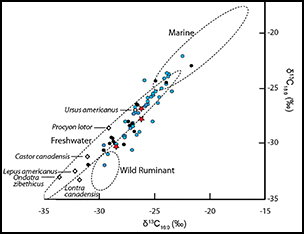Crossref Citations
This article has been cited by the following publications. This list is generated based on data provided by
Crossref.
Robson, Harry K.
Lucquin, Alexandre
Gibbs, Kevin
Saul, Hayley
Tomoda, Tetsuhiro
Hirasawa, Yu
Yamahara, Toshiro
Kato, Hirofumi
Isaksson, Sven
Craig, Oliver E.
and
Jordan, Peter D.
2020.
Walnuts, salmon and sika deer: Exploring the evolution and diversification of Jōmon “culinary” traditions in prehistoric Hokkaidō.
Journal of Anthropological Archaeology,
Vol. 60,
Issue. ,
p.
101225.
Bondetti, M.
Scott, E.
Courel, B.
Lucquin, A.
Shoda, S.
Lundy, J.
Labra‐Odde, C.
Drieu, L.
and
Craig, O. E.
2021.
Investigating the formation and diagnostic value of ω‐(o‐alkylphenyl)alkanoic acids in ancient pottery.
Archaeometry,
Vol. 63,
Issue. 3,
p.
594.
Patania, Ilaria
and
Jaffe, Yitzchak
2021.
Collaboration, not competition: A geoarchaeological approach to the social context of the earliest pottery.
Journal of Anthropological Archaeology,
Vol. 62,
Issue. ,
p.
101297.
D’Ercole, Giulia
Garcea, Elena A. A.
Varadzin, Ladislav
and
Varadzinová, Lenka
2024.
Early Pottery Technologies among Foragers in Global Perspective.
p.
271.
Bartz, Emily R.
Reber, Eleanora A.
and
Sassaman, Kenneth E.
2024.
Early Pottery Technologies among Foragers in Global Perspective.
p.
239.
Janzen, George
Formberg, Jason
Braun, Arno
Hammann, Simon
Hornung, Sabine
and
Fiedler, Sabine
2024.
Testing sample selection criteria and loss of biomarkers during cleaning of archaeological unglazed pottery to maximize organic residue quantities.
Archaeometry,
Chakraborty, Kalyan Sekhar
Paskulin, Lindsey
Shirvalkar, Prabodh
Rawat, Yadubirsingh
Miller, Heather M.-L.
Slater, Greg
and
Speller, Camilla
2024.
Assessing the applicability of protein residues in combination with lipid residues to reconstruct Indus foodways from Gujarat.
Quaternary Environments and Humans,
Vol. 2,
Issue. 6,
p.
100038.
